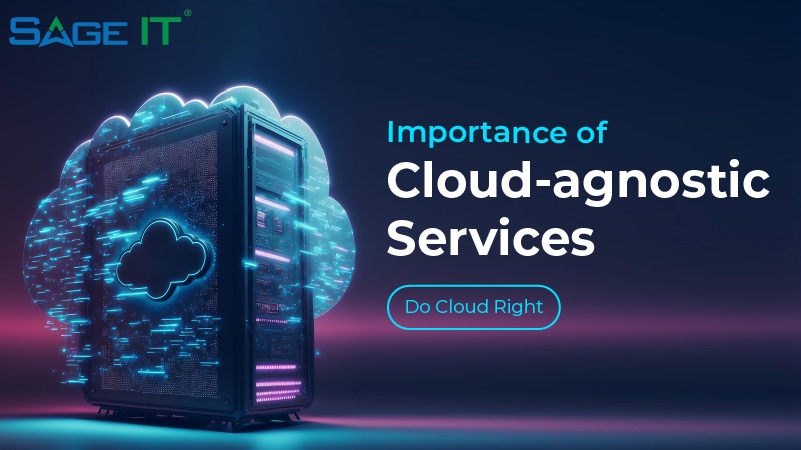
Importance of Cloud-agnostic Services
The goal of cloud-agnostic architecture is to create apps that function flawlessly on any cloud provider. Cloud-agnostic services are independent of the service fabric of any one cloud platform, in contrast to cloud-native applications. Rather, they incorporate a variety of open-source and vendor-supplied tools.
Today most of the Cloud Vendors try to lock in with the services they offer, making clients difficult to move out or integrate with their competitor services. This is one of the reasons why most of the Cloud vendors offer data ingress for free and make data egress chargeable. There are invisible boundaries that restrict one Cloud vendor solution from interacting with the other. In addition to the existing challenges of Cloud Native, Licensing Models, and Client contracts also increase the complexity and the overheads of the businesses. The approach to restricting businesses from providing agility by these vendors may be different; however, the objective remains the same.
Despite all these differences, certain services bring the commonality among all the cloud players like running Kubernetes and VMWare Solutions. Running Oracle Databases, RedHat Services, DevOps Services, and Apache Foundational services across all the clouds can be another example.
For Clients to build and run cloud-agnostic services Kubernetes and VMWare can be their preferred choice. Some of the Salient features of the Cloud agnostic solutions over Cloud Native solutions are:
- Between On-Prem Datacenters, Private Clouds, and Public Clouds, applications can be relocated at any time.
- A plethora of features are offered to clients to optimize performance.
- Open-source tools, libraries, and connectors can be incorporated by developers, who are not limited to using only one Cloud Vendor or set of technologies.
- Because of the redundancy that cloud-agnostic architecture’s apps provide, in the event of a failure, applications may be promptly recovered and services can be transferred to another platform if the current one encounters an interruption.
- Cloud-agnostic architecture makes open-source tools easier to use, allowing for more direct cost control and the flexibility to modify spending as necessary.
- Cloud-agnostic architecture provides greater accessibility to open-source tools, allowing for more direct control over costs and the ability to make spending adjustments as needed.
Larry Ellison the Oracle CTO calls for an end to “walled gardens” to give businesses more freedom to choose and experience. “There should be an internet of clouds,” he says, “the clouds should be interconnected, and you should be able to mix and match between multiple clouds…the garden walls come tumbling down.”

The Current Cloud providers are more siloed. This is one of the greatest concerns most businesses have and goes unspoken. They fear cumbersome processes, restrictions, and costs during their cloud exit. This is why most businesses prefer hybrid and cloud agnostic rather than completely cloud native. The developers are also encouraged to use Open-source languages, tools, frameworks, and libraries to build applications that can run anywhere with no dependencies on the underlying platforms or infrastructure.
Of Course, there are challenges associated with this approach too. Open Source comes with bugs, vulnerabilities, security threats, performance, and scalability challenges which otherwise is no less good compared to the Cloud Native services which are more tested and proven. Hence developers may have to play caution when choosing the right set of software, services, and tools while designing their solutions for the customers. A right mix of cloud-agnostic services with curated and tested open-source tools and minimal dependency on cloud-native services can come to their rescue. Security needs to be baked in while designing the solution making it more robust and resilient to threats. This would help them bring down the costs and keep them in control.

As final comments and recommendations, when creating essential business apps and services, an organization can use carefully chosen and tried-and-true open-source tools to create a cloud-agnostic approach that eliminates the need for a specific cloud provider to maintain the business model; at the same time, the company might then leverage cloud-native architecture to operate supporting apps and services quickly. This way you can cut down on the dependencies to run core services of your business and bring agility to the solution design.
Contributed for Sage IT by,
G S Raman Das
Vice President of Technology Services (Cloud & ITSM)









